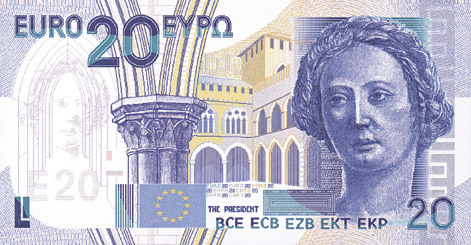Euro Banknotes
The euro banknotes that never were !
|
December 1995: The Madrid European Council adopts the name "euro" for the new european currency. February 1996: The Banknote Working Group, made up of cash experts from the EU national central banks, submits design briefs for the two themes ( abstract/modern and ages/styles of Europe; for both of them: through the ages). September 1996: The design competition closes; 44 proposals (27 "traditional" and 17 "modern") are submitted. A jury of internationally renowned experts in marketing, design (For France : Gerard Caron, founder of this Admirable Design site) and art history assese all the proposals and draws up two shortlists of the five best design series for each theme. October 1996: A public survey on the ten shortlisted design is carried out involving more than 2000 people from all EU member states exept Denmark. December 1996: The European Monetary Institute (EMI)selects entry T 382 as the winner. This design was created by Robert Kalina from the Oesterreichische Nationalbank (Austria) !
Aim: Banknotes should be: They must be clearly identifiable as European and should embody a cultural and political message that is readily ceeptable to all European citizens. Design features: Each banknotes must depict a particular historical period ("age") and an architectural feature ("style") from that period to illustrate the "ages and styles of Europe". Ages are assigned to the denominatios as following: € 5: classical, € 10: Romanesque, € 20: Gothic, € 50: Renaissance, € 100: baroque and rococo, € 200: the age of iron and glass, € 500: modern 20th century architecture. |





















































